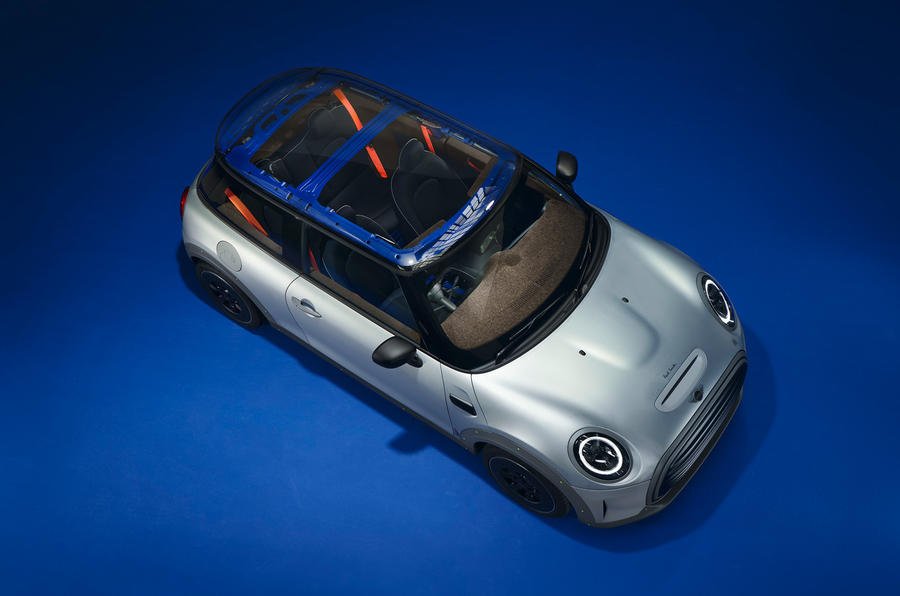Bespoke Mini Strip highlights firm's sustainability push

Mini has teamed up with British fashion designer Paul Smith - known in motoring circles for his brightly coloured takes on the original Mini - to create the Mini Strip, a pared-back one-off which emphasises the firm's sustainability ambitions.
It follows the Urbanaut concept revealed in 2020 as another statement of intent for Mini's future as a maker of simple and sustainable cars with an emphasis on utility and efficiency.
Unlike the Urbanaut, however, the Strip is closely related to the current Electric, with the principles of "simplicity, transparency and sustainability" guiding Smith's makeover of the car.
As its name suggests, the Strip concept does away with many of the standard car's features and adopts several unique design cues in the name of weight reduction and pure functionality. Only elements deemed "absolutely necessary" by Smith remain.
Most obviously, the Strip goes without a production-specification paint finish, wearing just a thin layer of transparent paint to prevent rush and featuring exposed grinding marks from the factory. Mini says this gives "a minimalist, high-class design with a fresh and unconventional appeal". Smith, meanwhile, refers to the unrefined finish as "the perfect imperfection".
The Strip does retain its contrasting black plastic body trim, but here it's 3D-printed using recycled plastic and decorated with exposed screwheads that aim to show how easily the car could be dismantled and recycled at the end of its usable life. The grille, blanked off to reduce drag, is made from recycled perspex to save even more weight, as are the aerodynamically optimised wheel covers and the panoramic sunroof.
The transformation is even more drastic inside, where all unnecessary trim elements have been removed and attention is drawn to the bare metal body shell by way of a bright-blue paint finish.
The largely featureless dashboard consists of a single-piece, semi-transparent panel, and though the circular recess for Mini's characteristic central speedometer remains, it's now used to house a smartphone, removing the need for the associated wiring and materials.
The driver's phone will connect automatically to the car and become the "media control centre", with the only physical controls remaining those used for the windows and start-stop system.
Conventional materials including leather and chrome are absent from the cabin, with the seats finished in a knitted fabric that's entirely recyclable, while the floor mats are themselves made of recycled rubber.
The dashboard top, door panels and parcel shelf are all finished in recycled cork, which Mini says "could provide a substitute for foamed plastics in future", due to its firmness and soft-touch feel. A positive side effect, the firm notes, is that cork and knitted fabric are open-pore materials that "enhance interior acoustics".
Elsewhere, the airbag is visible through the mesh centre of the minimalist steering wheel, which is wrapped in handlebar tape rather than synthetic leather, while mesh is also used for the door panels so that the innards are almost fully exposed.
Climbing rope is used in place of interior door handles, coloured orange to match the seat belts. The airbags in the roof are on show, too, as is the car's wiring loom, drawing attention, Mini says, "to functions that are normally concealed during manufacture".
There's no production intent for the Strip, but Mini is keen for it to demonstrate the feasibility of sustainable car manufacturing and design.
Earlier this year, Mini built a physical version of the Urbanaut concept, having previously shown it only as a digital render. That car also has a strong emphasis on sustainability, with a flexible, minimalist cabin and a focus on using space efficiently.
